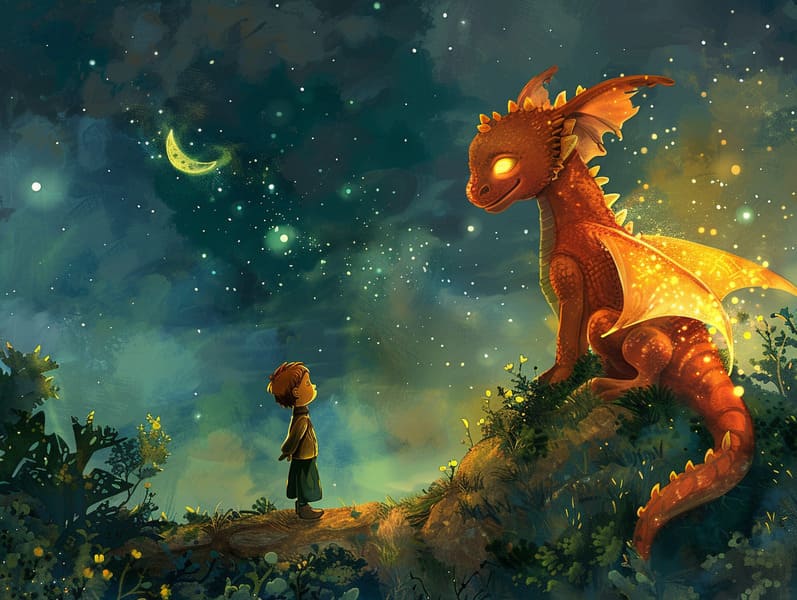
Timeless fairy tales have legendary status. These stories have been passed down from one generation to the next millennia before they were ever documented. They were born from a variety of cultures, including Eastern traditions. They were initially transmitted among grown-ups, often carrying themes and messages aligned with the societal norms and beliefs of the time.
The renowned Brothers Grimm, Jacob and Wilhelm Grimm, were among the first to compile and release many of these beloved tales. Their volume, "Grimm's Fairy Stories," included narratives like "The Little Glass Slipper," "Little Brother and Little Sister," and "Schneewittchen," which have since become hallmarks in the world of traditional fairy tales. Similarly, H. C. Andersen's enchanting stories, such as "The Sea Maid," and "The Duckling that Could," have captivated hearts worldwide, establishing their place in the pantheon of timeless fairy tales.
Though they are centuries old, traditional fairy tales remain as impactful as ever, especially as children's night stories. These fantastical tales are now available in many formats, including gorgeously illustrated books, enchanting animations, and internet fairy tales.
Their ongoing significance can be connected to several enchanting factors:
Important Morals: Old fairy tales often present important moral lessons. Tales like "The Shepherd Boy and the Wolf" teach the significance of sincerity, while "The Story of the Tortoise and the Hare" highlight the traits of persistence and modesty. These tales offer little ones clear distinctions between correct and incorrect, guiding their moral compass in a tender yet deep way.
Kindness and Comprehension: Classic fairy tales frequently depict beings facing obstacles and hardships, fostering readers to connect with their struggles and boost their triumphs. For instance, "The Tale of Beauty and the Beast" conveys the necessity of seeing beyond the surface to understand the inner core of a soul, promoting understanding and awareness.
Cultural Understanding: Many ancient fairy tales are deeply ingrained in the cultural contexts from which they originated. Learning from these stories can provide informative snapshots into different societies, encouraging a sense of global respect and discernment.
Creativity and Fantasy: The imaginative elements in classic fairy tales—spells and potions—fire up children’s creative thoughts. These stories move readers to fantastical realms, promoting fantasy ideas and a sense of awe that continues a lifetime.
Ancient fairy tales are not only entrancing but also enlightening. They act as delightful tools in promoting various cognitive and emotional skills in young ones. When ancient fairy tales are spoken out loud, they strengthen verbal skills by presenting new lexicon and intricate sentence structures. This practice also promotes auditory perception and attention, as the young track the narrative, prepared to see what happens next.
Furthermore, exploring the themes and characters of classic fairy tales can cultivate thought processes and thinking skills. Young readers are educated to detect patterns, make predictions, and get cause and effect. These debates also contribute to young ones communicate their thoughts and feelings, advancing their emotional intelligence.
In today’s electronic age, the availability of digital fairy tales has made these narratives more accessible than ever. Websites and programs provide extensive collections of traditional fairy tales that can be enjoyed or listened on anytime, anywhere. Fairy tales spoken are particularly liked, presenting an enjoyable way for the young to relish these whimsical stories. Sound books and narrated videos transport characters and settings to life, often joined by mesmerizing audio effects and background music that intensify the storytelling experience.
The unfading fascination of traditional fairy tales lies in their ability to alter to modern times while maintaining their underlying messages. Contemporary updates of these narratives often show more varied figures and modern settings, making them familiar to today’s audience. However, the essential messages of valour, kindheartedness, and honesty remain unchanged, continuing to resonate with young readers of all ages.
Traditional fairy tales also offer a sense of protection and familiarity. They extend a neat narrative with a definite beginning, middle, and end, often winding up with the solving of conflicts and the triumph of virtue over wickedness. This constancy can be encouraging for kids, delivering a sense of sturdiness in an ever-changing world.
Classic fairy tales continue to delight and train new generations, maintaining their appeal and meaningfulness in modern society. As children's night stories, they allow a perfect blend of enchantment and education, furthering moral values, empathy, and creativity. The proliferation of here web-based fairy tales and the prevalence of fairy tales voiced affirm that these timeless stories remain attainable to new generations.
By preserving and releasing these stories, we continue to pay tribute to the rich tapestry of myths and cultural heritage. Whether you are viewing a beautifully illustrated book, accessing a digital collection, or listening on an audio story, the grace of famous fairy tales is always within reach. These tales demonstrate of the ageless presence of storytelling and its ability to bond us across time and space.
Be it you are accessing a vibrantly illustrated book, accessing a online library, or hearing an audiobook, the fascination of bedtime fairy tales is always within reach.
These narratives emphasize of the lasting strength of narratives and its ability to bind us across time and space, forging a link that delights and instructs alike.